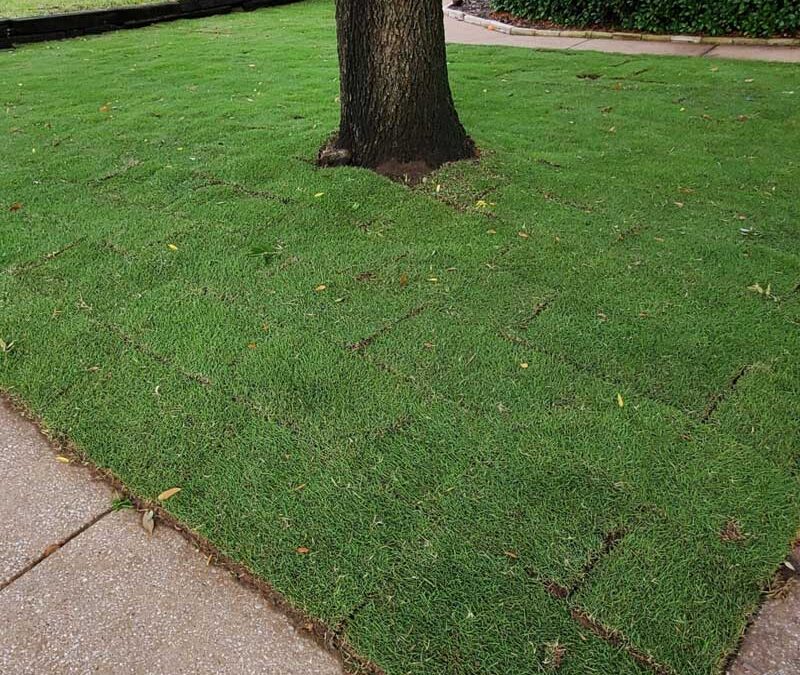Sod is tough, but its roots need time to grow strong:
-
- Keep off the Sod: Avoid letting pets or people walk on the sod for the first 30 days.
- Minimize Traffic: Try to stay off the sod as much as you can during this period.
- Fix Tears: If the sod tears or comes apart, gently push the torn parts back together.
- Wait to Mow: Wait 14 to 21 days after laying the sod before mowing it.
- Cut Carefully: When you mow, only trim about one-third of the height of the sod.
- Use Sharp Blades: Make sure your lawnmower blades are sharp for a clean cut.
- Consider Bagging: It’s a good idea to use a bagger attachment on your mower at first.
- Clean Up Clippings: If you don’t have a bagger, rake up any excess grass clippings after mowing.
Once your sod has settled in, it usually only needs about an inch of water per week to thrive.
Sod Watering Instructions
To keep your new sod healthy and thriving, follow these simple watering instructions:
-
- First Watering: Right after laying the sod, start watering immediately. Make sure to apply at least 1 inch of water evenly across the area. This will ensure that the soil beneath the sod is thoroughly moistened, about 3 to 4 inches deep. The aim is to keep the soil consistently moist, but not waterlogged.
- Initial Two Weeks: Water the sod twice daily for the first two weeks. Each watering session should last between 15 to 25 minutes, keep it damp.
- Third and Fourth Weeks: During the third and fourth weeks, reduce watering to once per day.
- Best Time to Water: Water your lawn early in the morning or late in the afternoon. Avoid watering in the evening, as dampness overnight can attract pests, diseases, and fungus.
- Monitoring: Keep an eye on your sod for signs of dryness. If you notice any dry patches, water those areas manually. Also, adjust your watering schedule based on rainfall.
- Avoid Overwatering: Too much water can cause the sod to rot. If you see puddles forming or the sod feels excessively wet, stop watering and let it dry out.
- Avoid Underwatering: Insufficient water can lead to the sod drying out and dying. If you notice gaps between sod rows or the sod pulling up at corners, increase your watering.
- Adjust Sprinklers: If you observe poor growth in certain areas, check if your sprinklers are covering the entire lawn evenly. Make adjustments as needed.
- Watch for Signs: Look out for grayish spots or areas that don’t recover when stepped on. These could be signs of underwatering. Adjust your watering promptly to help the sod recover.
By following these watering guidelines and making necessary adjustments, you can ensure that your sod stays healthy and vibrant for years to come.
Sod Warranty
While we do guarantee that each sod variety is true to its name and biological structure, we do not guarantee survivability or suitability ongoing from the time of delivery and/or installation. Installing sod is a risk and it is a perishable product and must be taken care of upon installation. We offer a one-time callback on sod installations to address any issues. This warranty is subject to the payment of the original invoice being made within the terms of the sale and the account must be current. To qualify for replacement all the following must be true.
-
- Proper watering must be applied to the sod.
- Sod was not trampled on by traffic of any kind; animals, pedestrians, or vehicles.
- Sod was not burned by chemicals, pesticides, fertilizer, or reflected sunlight from a home’s foundation or concrete.
- Pets were not allowed to soil on the lawn.
- No acts of God, excessive flooding, fallen trees

